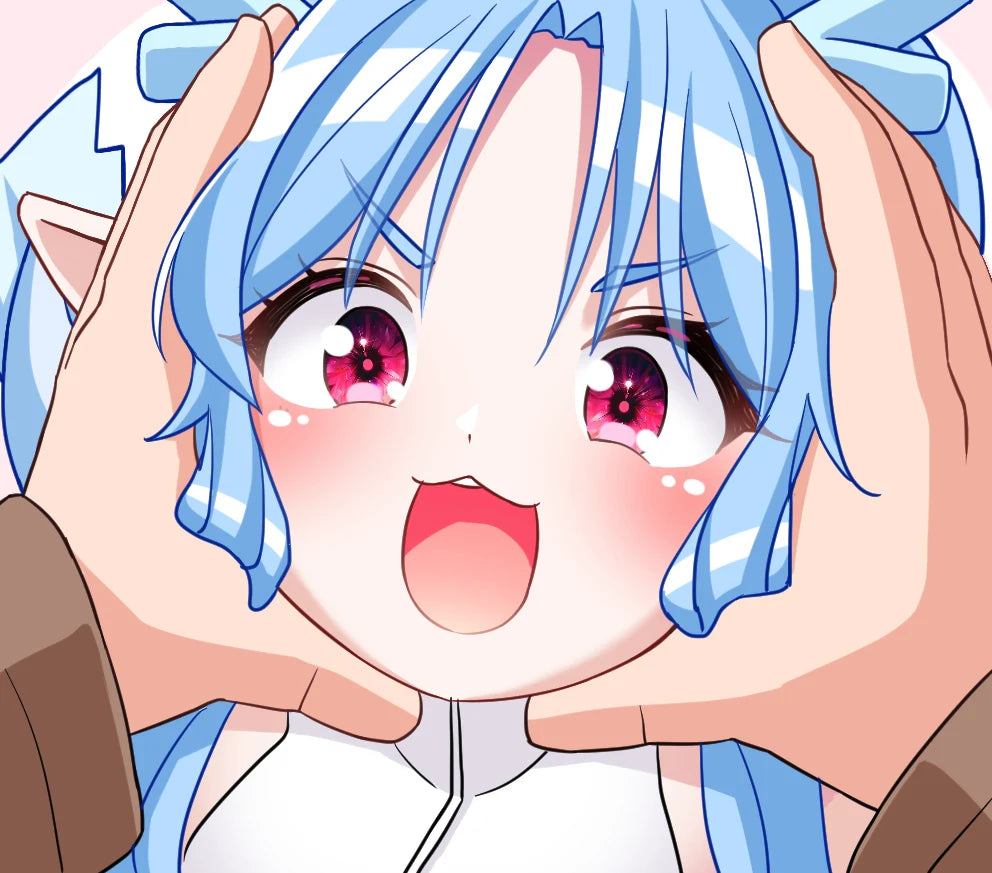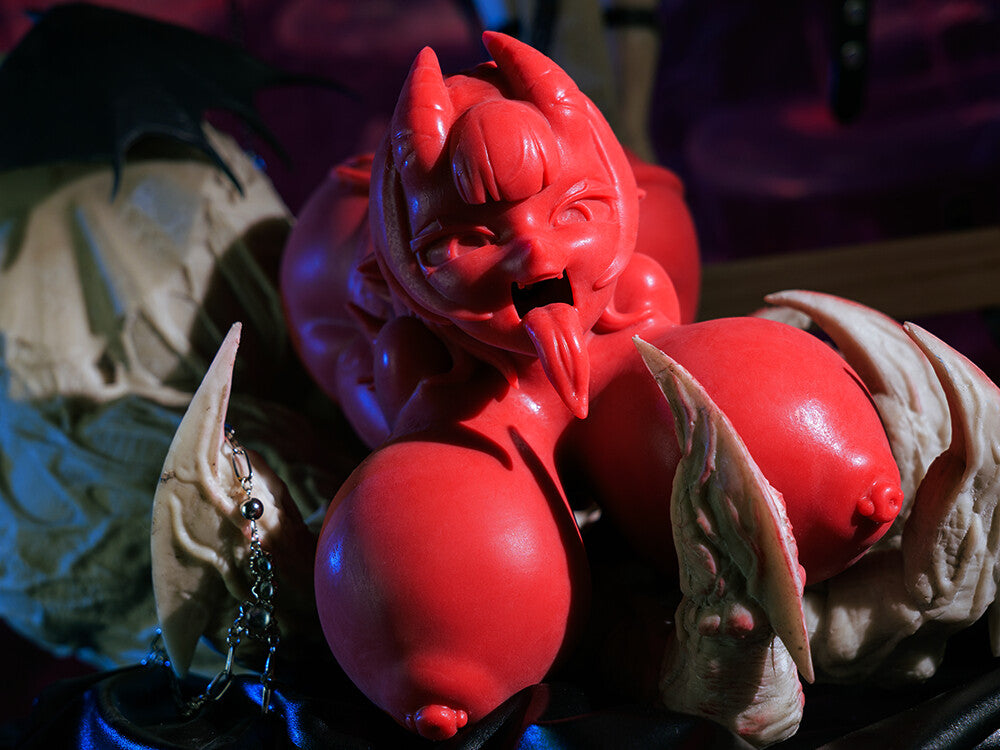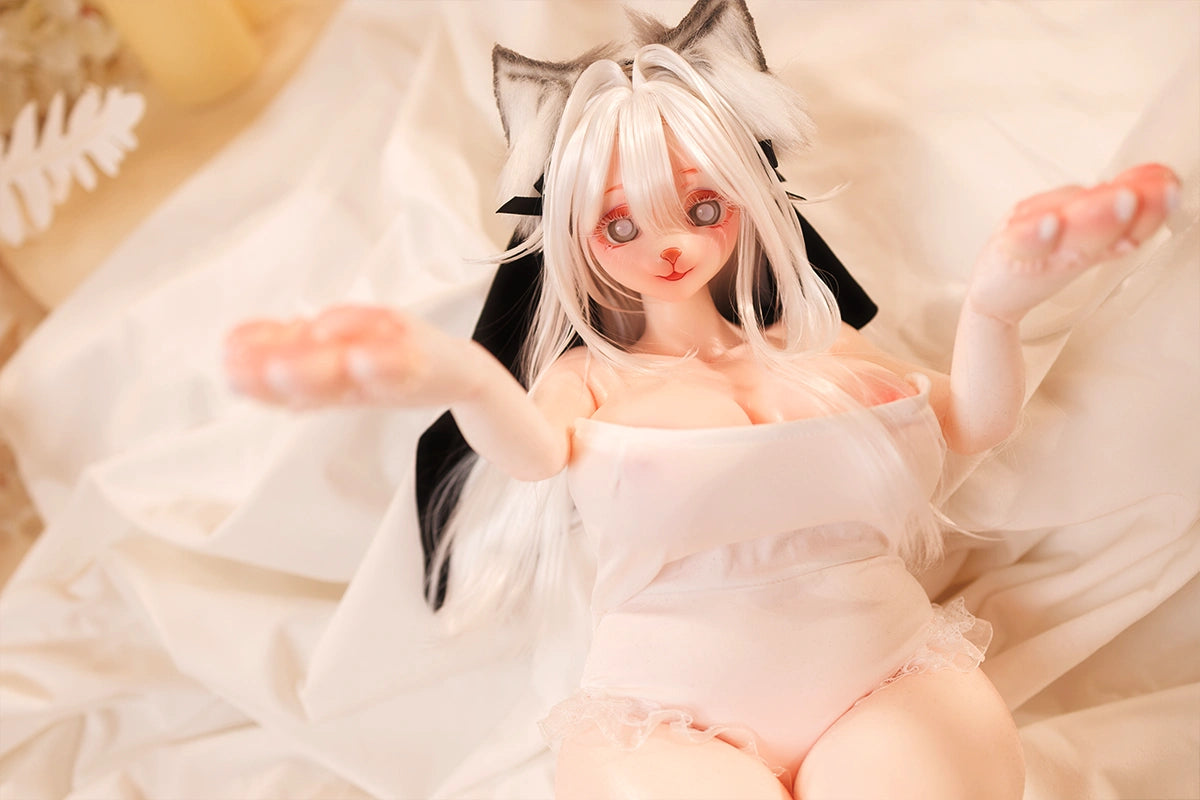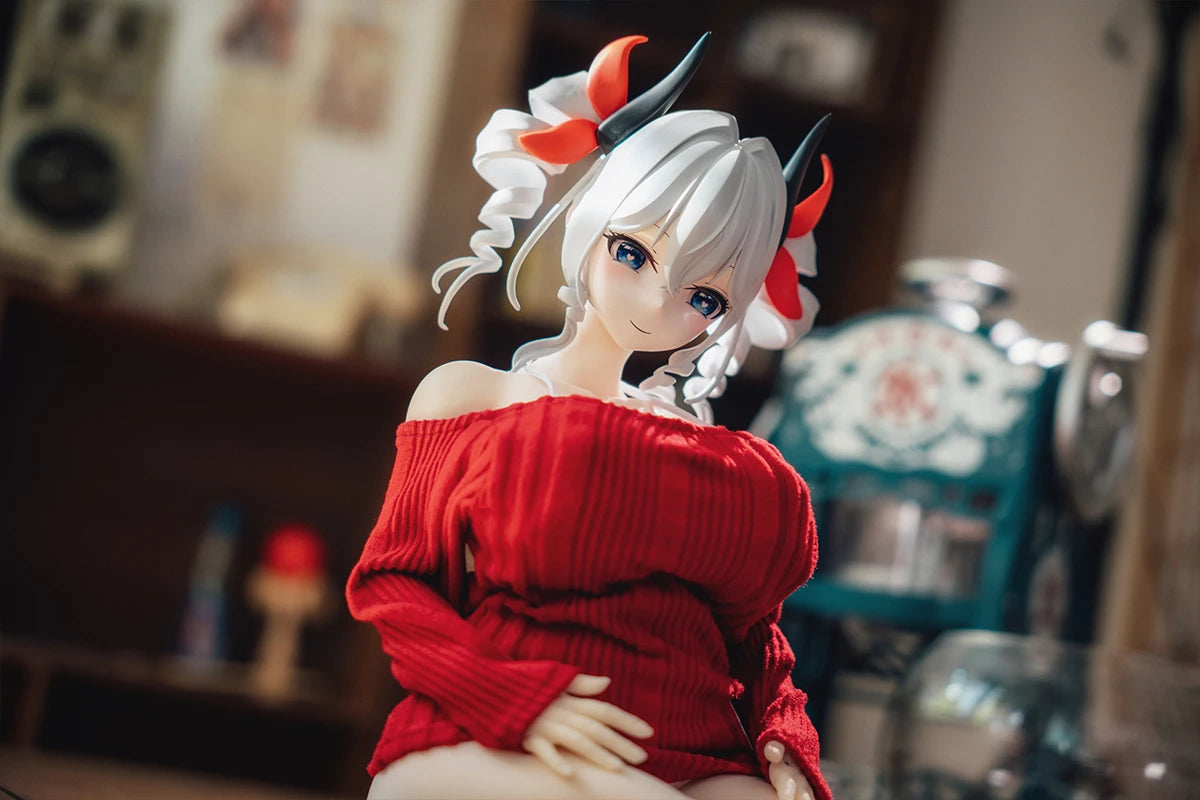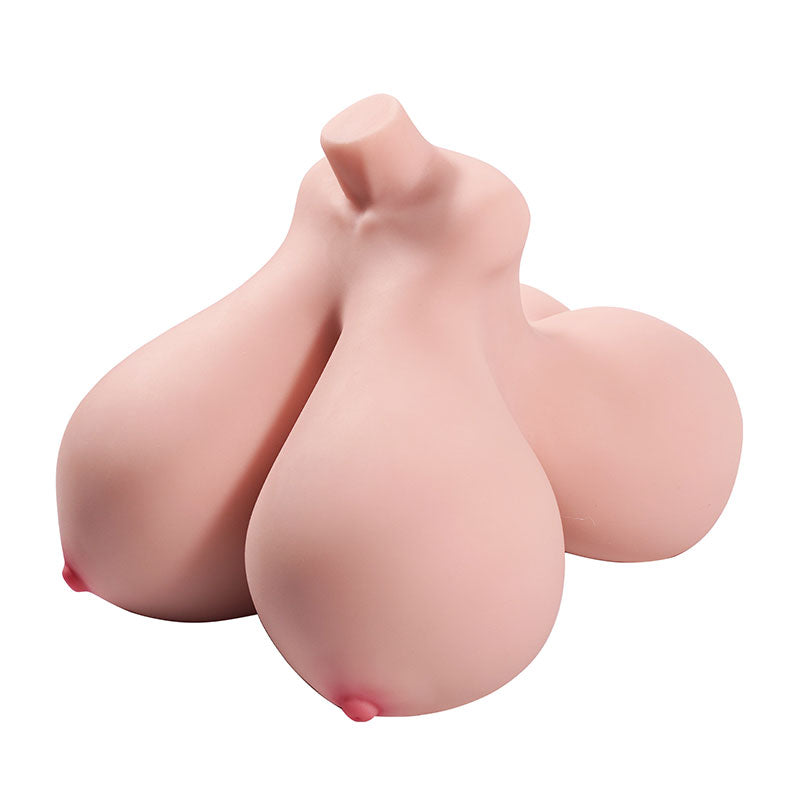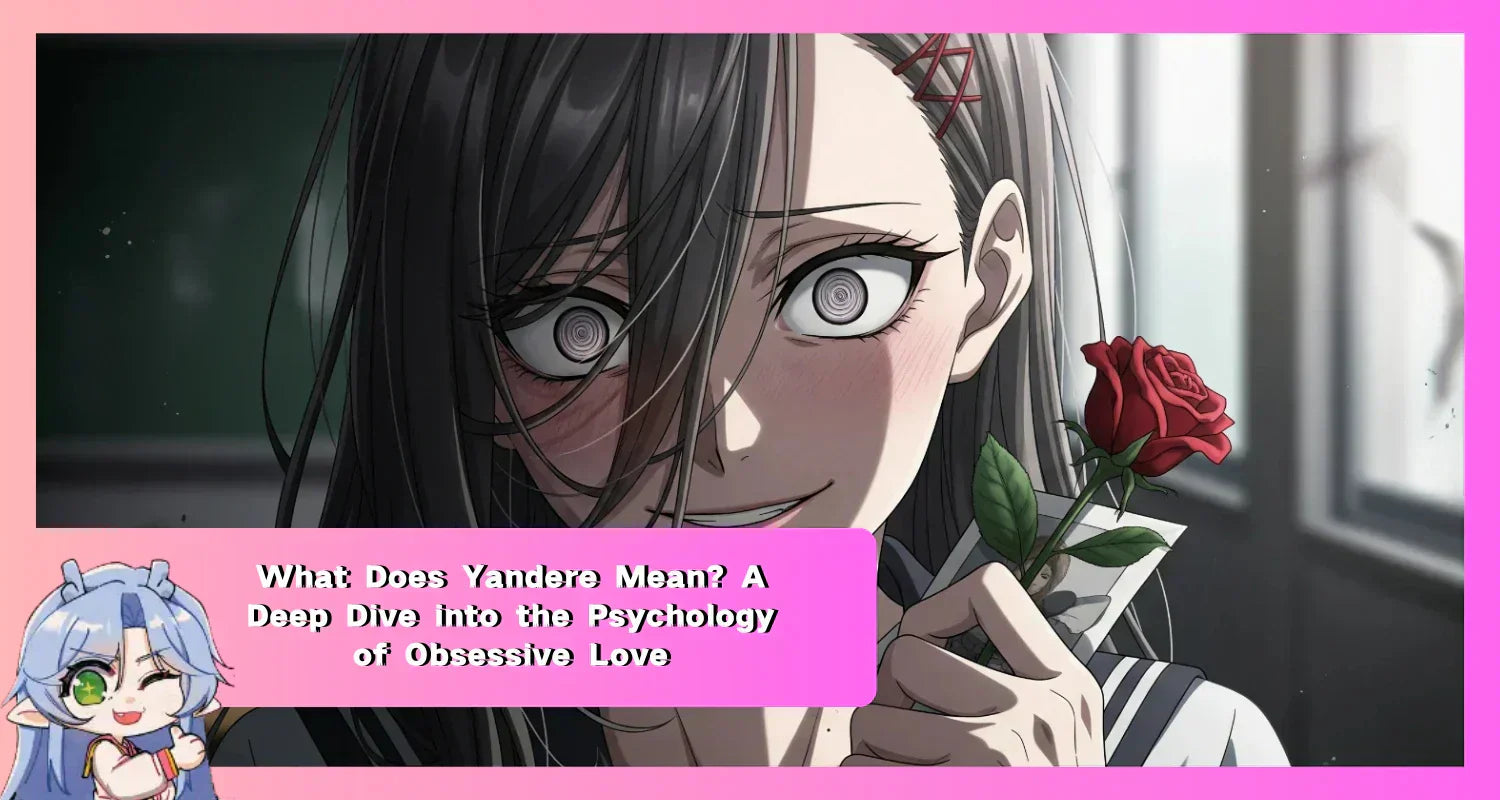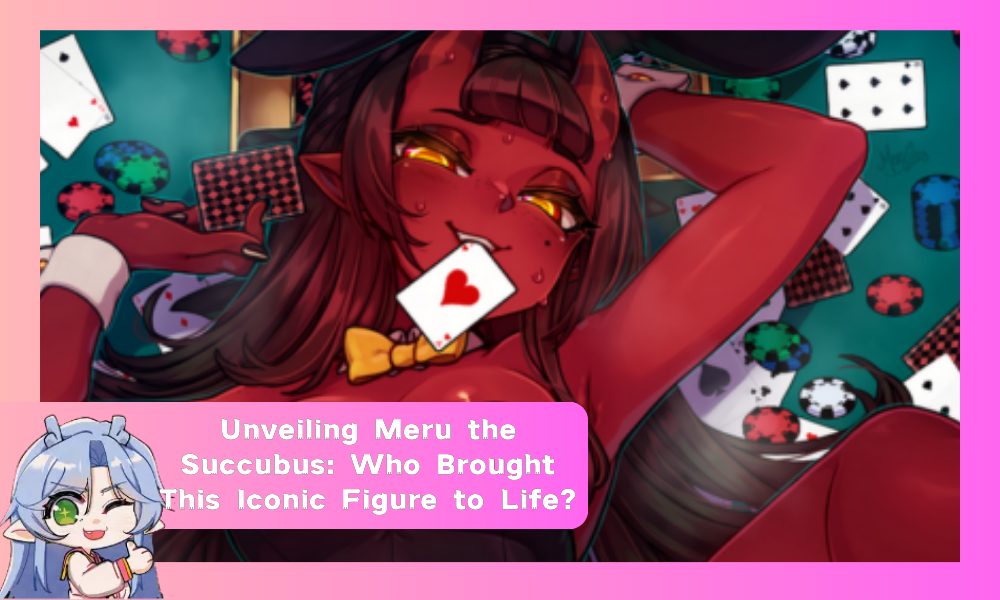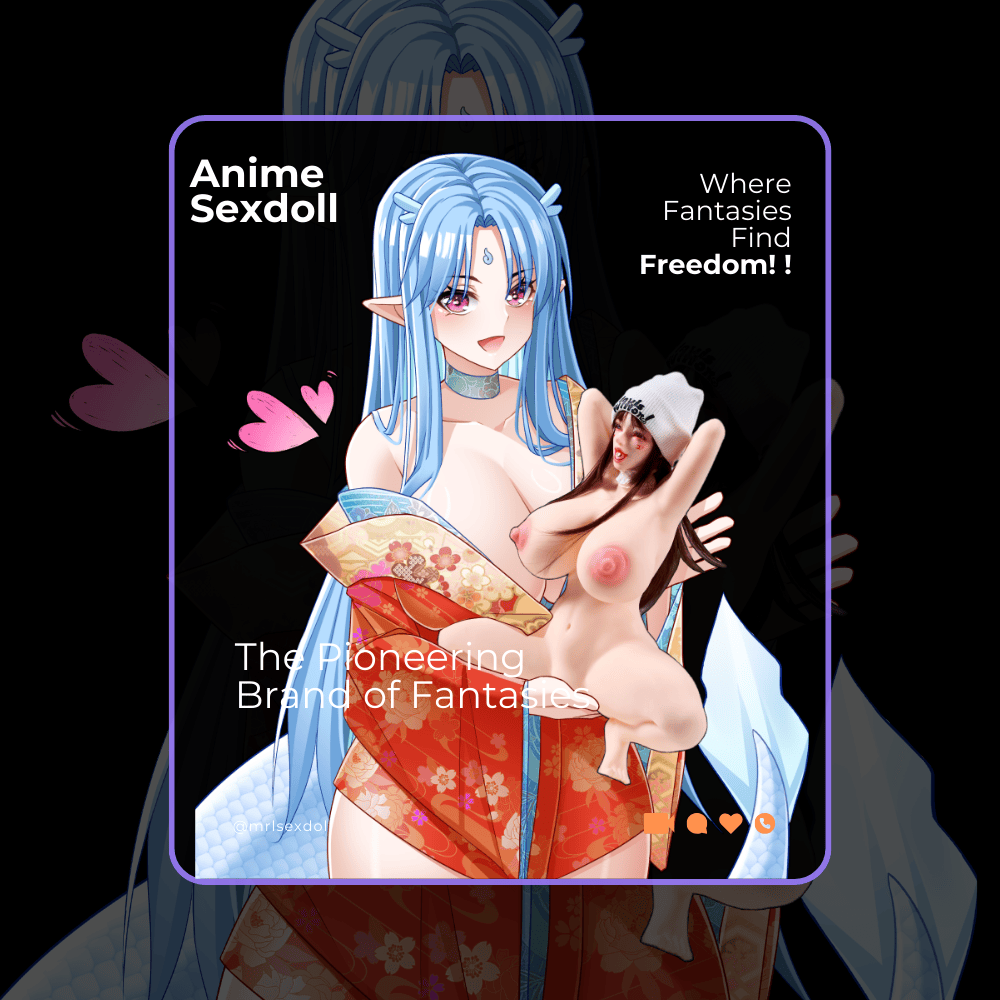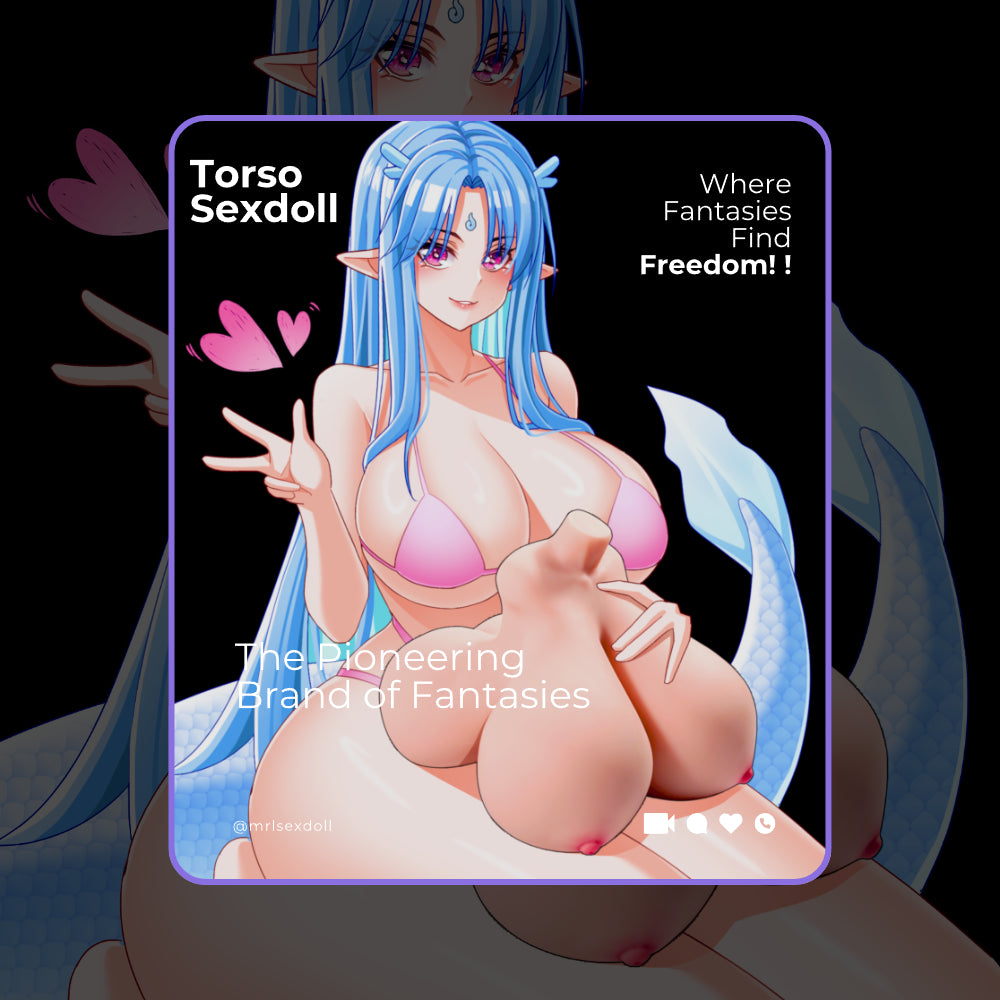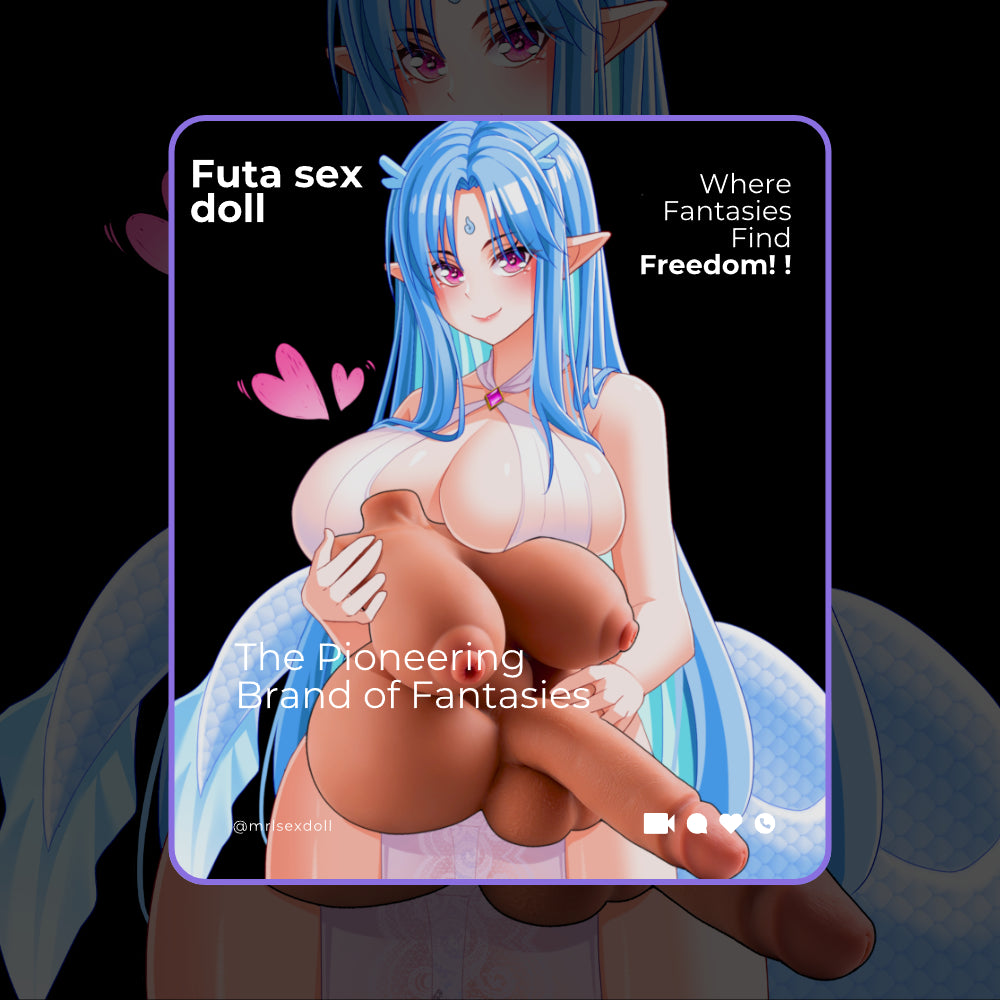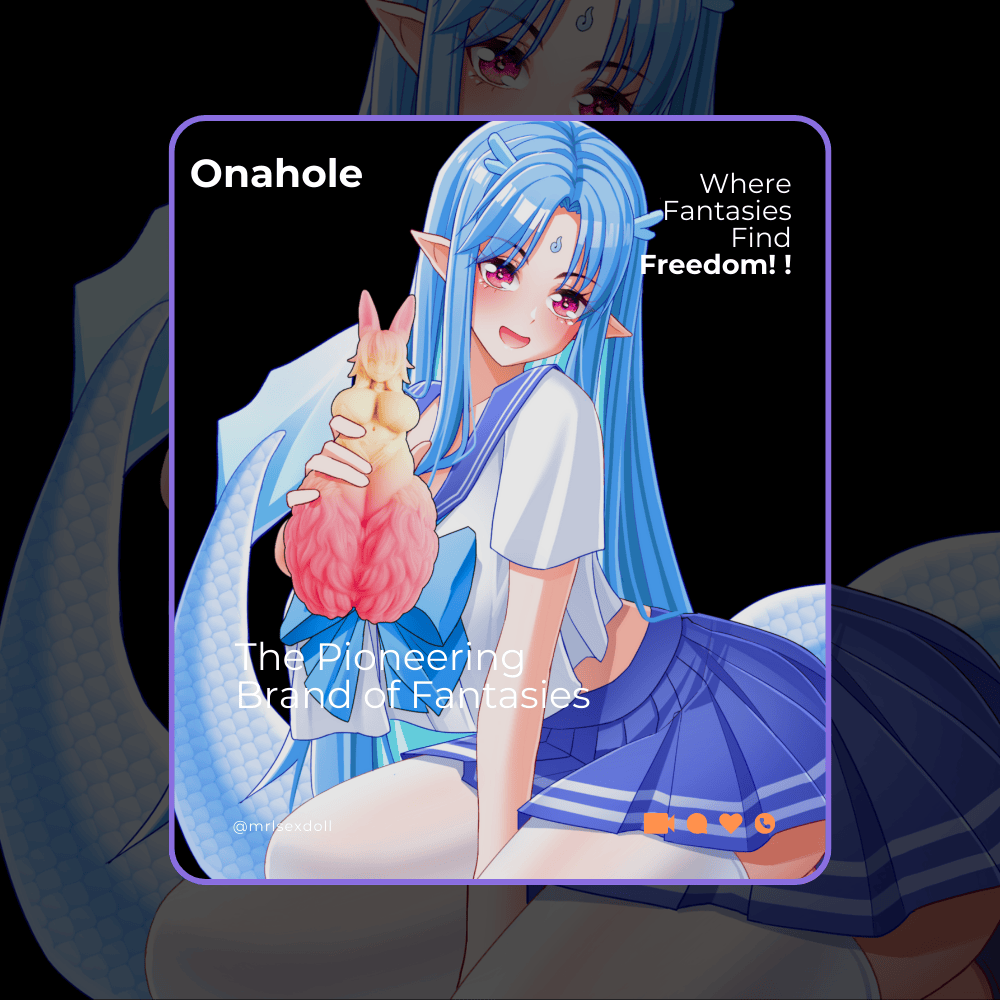What Does Yandere Mean? A Deep Dive into the Psychology of Obsessive Love

In Japanese anime and manga, you will find many character types, often called archetypes. These archetypes are a simple way to understand a character's personality and guess what they might do next. You may have heard of the tsundere, who acts cold at first but eventually shows a warmer, loving side. But among these types, few are as fascinating and unsettling as the yandere. This character raises a disturbing question: How can love, an emotion we connect with kindness and safety, lead to terrifying violence and obsession? This article will explain the yandere meaning, look into the psychology behind these characters, show famous examples from yandere anime, and explore the dark appeal of this unforgettable archetype.
Table of contents:
- The Anatomy of a Yandere: Deconstructing the Archetype
- From Yanderu to Deredere: The Yandere Meaning and Linguistic Roots
- The Two Faces of a Yandere Girl: Sweetness and Psychosis
- The Psychology Behind the Stare: Why Are Yandere Characters So Obsessive?
- A Spectrum of Obsession: The Different Types of Yandere
- Rogues' Gallery: The Most Iconic Yandere Anime Characters
- The Queen of Yandere: Yuno Gasai (Future Diary)
- The Slow Descent: Kotonoha Katsura (School Days)
- The Master Manipulator: Satou Matsuzaka (Happy Sugar Life)
- The Allure of Dangerous Love: Why We Are Drawn to the Yandere
- Frequently Asked Questions (FAQ)
The Anatomy of a Yandere: Deconstructing the Archetype
To really get what a yandere is, you first have to understand the parts that make up this unique character. The archetype is defined by its name and a signature two-faced behavior that makes it both easy to recognize and very creepy.
From Yanderu to Deredere: The Yandere Meaning and Linguistic Roots

The word yandere is a mix of two Japanese words that perfectly capture its conflicting nature. The first part, yanderu (病んでる ), comes from the verb yamu , which means "to be sick," usually in an emotional or mental way. The second part, deredere (デレデレ ), describes someone who is "lovestruck" or extremely affectionate. When you put them together, yandere literally means to be "sick with love."
This origin is what makes the yandere so different from the more famous tsundere . A tsundere character slowly changes from "tsun" (cold, hostile) to "dere" (loving) over the course of a story. In contrast, a yandere character’s change isn't slow at all—it's a sudden and violent switch. They start out as completely deredere —sweet and loving—until a trigger reveals the scary yanderu side of their personality.
The Two Faces of a Yandere Girl: Sweetness and Psychosis

The key feature of a yandere girl is her two-sided personality. On the surface, she often seems like the perfect partner: sweet, gentle, caring, and totally harmless. This first impression is a vital part of the archetype because it is meant to fool other characters as well as the audience. It creates a feeling of safety that makes her eventual turn to violence even more shocking.
This gentle appearance can be shattered in a moment. When the yandere feels that her romantic relationship is threatened—whether the threat is real or just in her head—she "snaps". Her loving side is replaced by a brutal, unstable state of mind. This is not just a mood swing; it is a complete change in her personality, where jealousy, possessiveness, and a readiness to do horrible things take full control. This two-faced nature works as a great storytelling tool, twisting the expectations of a cute character design to create suspense and psychological horror. The audience is always left feeling nervous, knowing that a sweet smile might be hiding someone capable of extreme violence.
The Psychology Behind the Stare: Why Are Yandere Characters So Obsessive?

Going beyond the basic definition, understanding why a yandere acts this way reveals a disturbing but interesting psychological profile. Their obsessive behavior is not for no reason but usually comes from deep fears and a twisted idea of love.
The actions of many yandere characters can be linked to a powerful fear of being abandoned, which is often caused by past trauma or a lonely childhood. This deep insecurity shows up as a controlling and objectifying kind of love. The love interest stops being a partner and becomes a possession—like an "exotic bird that must be tightly caged to prevent it from flying away". Their love is not based on trust but on a desperate need for control, which is fueled by the fear of being left alone.
This psychological state leads to a common set of behaviors. Extreme jealousy is the most important one; anyone who even talks to their beloved is seen as a rival who must be watched or gotten rid of. They often use manipulation and emotional blackmail to control their partner and separate them from friends and family. This creates a very unstable and unhealthy relationship, built on a black-and-white view of the world where the yandere and their partner are "all good" and everyone else is a threat. In a way, the archetype is like a fictional, over-the-top version of real-life insecure attachment, where the desperate neediness and violent reactions are an extreme dramatization of real psychological fears.
A Spectrum of Obsession: The Different Types of Yandere
The yandere is not a single, simple archetype. While all of them are driven by obsessive love, the way they act can be very different. This creates a range of behaviors from quiet manipulation to open violence. Understanding these different types helps us see the small differences in the characters that fit under this label.
|
Yandere Type |
Primary Motivation |
Typical Actions |
Key Example |
|
Eliminating |
Remove all rivals and obstacles. |
Violence, murder, direct confrontation. |
Yuno Gasai ( Future Diary ) |
|
Isolating |
Ensure the love interest depends solely on them. |
Kidnapping, cutting off social ties, creating a "sanctuary." |
Toma ( Amnesia ) |
|
Manipulative |
Control the situation and the love interest's emotions. |
Gaslighting, emotional blackmail, orchestrating events. |
Satou Matsuzaka ( Happy Sugar Life ) |
|
Submissive |
Unquestioning devotion and obedience. |
Willingly perform any act, including immoral or violent ones, if asked. |
Rolo Lamperouge ( Code Geass ) |
The Supernatural Possessive: A Hentai Yandere Sub-Archetype
Within this range, a powerful sub-type often appears in darker fantasy stories and hentai yandere plots: the supernatural being. For these characters, being extremely possessive is not a psychological problem but a key part of their nature. Unlike a human yandere , whose obsession is a "sickness" ( yanderu ), a creature like a succubus or a demon is defined by its intense focus on a target. Their obsession is their purpose.
The character of Meru the Succubus is a perfect example of this idea. Her demonic charm and naturally seductive personality create a kind of magnetic, inescapable "love" that is very similar to a yandere 's possessiveness. However, her actions are not based on human trauma but on a supernatural need to claim and keep her chosen one. This idea, often seen in yandere hentai , pushes the limits of the archetype by mixing obsessive romance with otherworldly power to create a uniquely thrilling and dangerous kind of loyalty.
Rogues' Gallery: The Most Iconic Yandere Anime Characters
To truly understand the impact of this archetype, we have to look at the characters who have defined it. These figures from yandere anime have not only made the trope a part of popular culture but have also shown its power for creating unforgettable stories of psychological horror and twisted love.
The Queen of Yandere: Yuno Gasai (Future Diary)

Yuno Gasai from Future Diary is probably the most famous yandere of all time and is the perfect example of the "Eliminating" type. Her love for the main character, Yukiteru Amano, is total, and she will kill anyone who gets in her way without a second thought. Yuno's famous "yandere face"—an expression with wide, shadowed eyes that mixes a sweet smile with a murderous look—has become a pop culture symbol, securing her place as the undisputed queen of the archetype.
The Slow Descent: Kotonoha Katsura (School Days)

Kotonoha Katsura from School Days shows a different way a character can become a yandere. At first, she is a shy, gentle, and bullied girl, but she is slowly pushed into madness by the constant cheating and emotional cruelty of her love interest, Makoto Itou. Her story is a sad one, ending in one of the most shocking and well-known conclusions in anime history. Kotonoha proves that a yandere is not always unstable from the start but can be created by deep heartbreak and betrayal.
The Master Manipulator: Satou Matsuzaka (Happy Sugar Life)

A more modern and psychologically deep example is Satou Matsuzaka from Happy Sugar Life , who shows the "Isolating" and "Manipulative" types. On the outside, she is a happy high school student, but underneath she is a very disturbed person who has kidnapped a young child, Shio, and created a twisted safe space she calls her "Happy Sugar Life". Satou doesn't always turn to violence right away. Instead, she uses manipulation, lies, and blackmail to protect her perfect world, which makes her a chilling example of a yandere who is as smart as she is dangerous.
The Allure of Dangerous Love: Why We Are Drawn to the Yandere

Considering how scary these characters are, their lasting popularity is something worth looking into. The appeal of the yandere is in the dark fantasy of total, unconditional love. In a world where relationships can feel temporary and loyalty isn't a sure thing, the yandere offers a fantasy of a partner whose whole life is about you.
This archetype makes their love interest feel "SPECIAL, IMPORTANT and UNIQUE" in the most extreme way. For viewers who might feel insecure or have low self-esteem, the idea of being the center of someone's universe is a very powerful fantasy. There is a strange sense of safety in their terrifying protectiveness; the idea that someone would literally burn down the world to keep you safe is a strong romantic thought, no matter how twisted it is. This is not just a fantasy of being loved, but a fantasy of feeling completely important—the power of being someone's only reason for living.
Frequently Asked Questions (FAQ)
Q1: What is the difference between a yandere and a yangire?
A yandere 's violent actions are always driven by romantic love or obsession. A yangire , however, "snaps" and becomes violent for reasons that have nothing to do with love, such as a past trauma being triggered. The main difference is whether or not love is the reason for their actions.
Q2: Are there popular male yandere characters?
Yes, while the yandere girl is more common, there are many interesting male yanderes. Famous examples include Toma from Amnesia , who puts his love interest in a cage to "protect" her, and Rolo Lamperouge from Code Geass , whose love for Lelouch makes him kill without feeling bad.
Q3: Is the yandere archetype found outside of Japanese media?
While the name is Japanese, the character type of an obsessive, violent lover can be found all over the world. In Western media, characters like Alex Forrest in the movie Fatal Attraction and Joe Goldberg in the Netflix show You show classic yandere traits. However, they are usually shown as villains in psychological thrillers instead of a specific romantic character type.
Q4: What makes a yandere a complex character instead of just a villain?
A well-written yandere is complex because their terrible actions come from a human emotion we can all recognize: love and the fear of losing it. The best examples have interesting backstories that make their reasons understandable, which makes them feel like tragic figures. Badly written ones, however, often feel like simple villains who are just "crazy" for no reason.
Q5: Where can I find more stories with a hentai yandere theme?
The hentai yandere subgenre explores the more extreme and shocking sides of this archetype, often pushing the limits of obsession and possessiveness. These kinds of stories are usually found on special manga and doujinshi websites, as well as in some visual novels and indie games that focus on darker romance or psychological horror.

